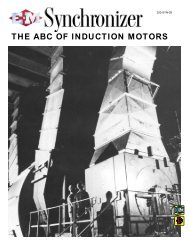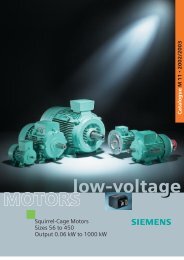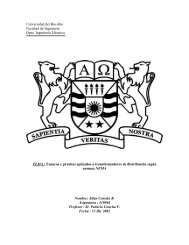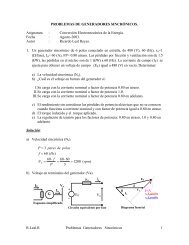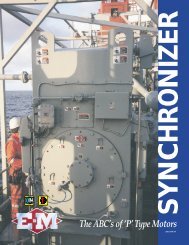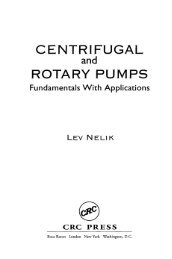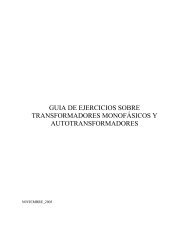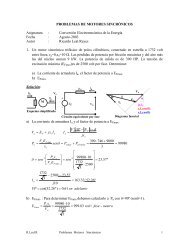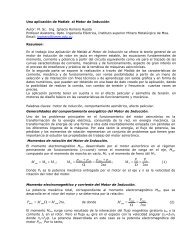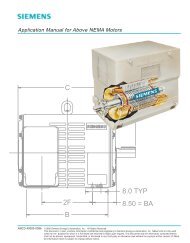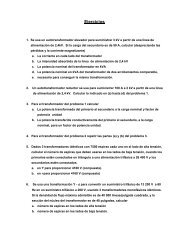Synchronous Motors
Synchronous Motors
Synchronous Motors
- No tags were found...
You also want an ePaper? Increase the reach of your titles
YUMPU automatically turns print PDFs into web optimized ePapers that Google loves.
APPLICATIONSWhere synchronous motorsshould be applied<strong>Synchronous</strong> motors can handle any loadwhich can be driven by a NEMA design Bsquirrel-cage motor. Whether they should be usedfor any specific application is a matter of someinvestigation. A rough rule of thumb is thatsynchronous motors are less expensive thansquirrel-cage motors if the rating exceeds 1 HP perrpm. However, that considers only initial costand does not take into account:1. Higher efficiency of the synchronous motor.2. Power factor improvement of the synchronousmotor.These two factors become important at speedsbelow 500 rpm where induction motorcharacteristics leave much to be desired. On theother side of the balance are these:3. Necessity for excitation source and field controlmeans for the synchronous motors.4. Relatively low torque/kVA efficiency instarting.5. Slightly greater maintenance cost, especiallywith motors with slip rings and brushes.A few general rules may be established as apreliminary guide in selection of synchronous vs.induction motors, but specific local conditionsmust govern:1. If especially low starting kVA, controllable torqueor adjustable speed are desired, a synchronousmotor and slip coupling may be used.2. At 3600 rpm, synchronous motors aresometimes used from 10,000 - 20,000 HP.Above that range they are the only choice.3. At 1800 rpm, motors show an advantage above1000 HP. From 2000 to 10,000 HP, synchronousmotors are used if power factor improvement isespecially important. Above 15,000 HP, they arethe only choice.4. Induction motors for operation below 500 rpmhave lower efficiency and a lower power factor.<strong>Synchronous</strong> motors are built at unity orleading power factor and with good efficienciesat speeds as low as 72 rpm. For directconnection in ratings above 1000 HP and inspeeds below 500 rpm, the synchronous motorshould be the first choice for compressors,grinders, mixers, chippers, etc.Figure 40 is a general sizing chart forsynchronous and induction motors.Leading power factor motors are slightly lessefficient than unity power factor motors, but theydo double duty. Their application depends on thenecessity for power factor correction.Induction motors require from 0.3 to 0.6reactive magnetizing kVA per HP of operatingload. 0.8 leading power factor synchronousmotors will deliver from 0.4 to 0.6 correctivemagnetizing kVA per HP depending on themechanical load carried. Equal amounts ofconnected HP in induction motors and 0.8 leadingpower factor synchronous motors will result inapproximate unity power factor.24<strong>Synchronous</strong> motor 2500 HP at 327 RPM with WPII enclosuredriving a reciprocating compressor in a refinery.




